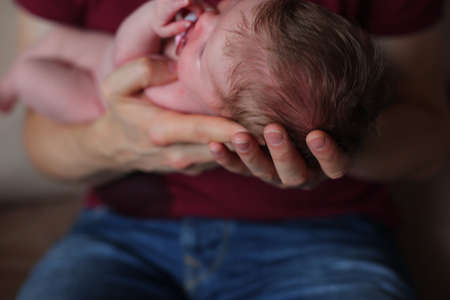Understanding Baby Burns and Scalds
As a parent, one of our biggest fears is seeing our little ones get hurt, especially when it comes to burns and scalds. These injuries can happen in an instant, and babies are particularly vulnerable because their skin is much thinner and more sensitive than adults. In the U.S., common causes of burns in babies include accidental contact with hot surfaces like stove tops, curling irons, or space heaters. Scalds, on the other hand, usually occur when a child comes into contact with hot liquids such as spilled coffee, soup, bathwater that’s too hot, or even steam from microwaved food. It’s important to know the difference: burns are caused by dry heat (like touching a hot pan), while scalds result from wet heat (like boiling water or steam). Babies are especially at risk not only because of their delicate skin but also because they can’t react quickly enough to move away from danger or communicate pain. This makes it crucial for us parents to understand how these accidents happen so we can both prevent them and know what to do if they occur.
2. Assessing the Severity of the Burn
When your baby gets a burn or scald, it’s crucial to quickly assess how serious it is. This helps you decide whether you can treat it at home or if you need to head straight to the ER. As a parent, it’s not always easy to tell, so here’s a straightforward way to break it down.
How to Tell If It’s a Minor or Major Burn
| Type of Burn | What It Looks Like | What To Do |
|---|---|---|
| Minor (First-Degree) | Red, dry, and painful skin; no blisters. Usually covers a small area. | Usually safe to treat at home. Follow home care steps. |
| Moderate (Second-Degree) | Red, blistered, swollen, and very painful; may look wet or shiny. | If small (less than 1-2 inches and not on face/hands/genitals), home care may be okay, but call your doctor for advice. |
| Severe (Third-Degree or Worse) | White, charred, leathery, or painless areas; burns deeper into skin layers. May affect large areas or sensitive zones like face, hands, feet, genitals, or joints. | This is an emergency. Call 911 or go to the ER immediately. |
Key Signs You Need Emergency Help:
- The burn is larger than your baby’s palm.
- The burn looks white, charred, or painless (a sign of nerve damage).
- Burns are on the face, hands, feet, genitals, major joints, or cover a large part of the body.
- Your baby is younger than one year old and has any blistering burn.
- Your baby seems unusually drowsy, has trouble breathing, or shows signs of shock (pale, cold skin; fast breathing; fainting).
When in Doubt—Check It Out!
If you’re ever unsure about your child’s burn—especially with babies—it’s always safer to call your pediatrician or head to urgent care. Trust your gut as a parent. Quick action can make all the difference when it comes to burns and scalds.

3. Immediate First Aid Steps at Home
When your baby gets a minor burn or scald, every second counts. Here’s what you should do right away to keep your little one safe and comfortable.
Step 1: Cool the Burn Quickly
Gently run cool (not cold) tap water over the burned area for 10-20 minutes. This helps reduce pain and limits skin damage. If running water isn’t available, use a clean, cool wet cloth. Avoid using ice or very cold water, as this can harm delicate baby skin even more.
Step 2: Remove Tight Clothing and Jewelry
If there is any clothing or jewelry near the burn, remove it carefully before swelling starts. But never try to peel off anything stuck to the skin—leave that for medical professionals.
Step 3: Protect the Burned Area
After cooling, gently pat the area dry with a clean towel. Cover the burn loosely with a sterile non-stick bandage or a clean cloth. This protects the skin from infection and keeps air off the sensitive spot.
What to Avoid
- No ointments or butter: Don’t apply creams, oils, toothpaste, or butter—these can trap heat and cause infections.
- No popping blisters: Blisters protect healing skin. Leave them alone to avoid infection.
- No adhesive dressings: Avoid sticky bandages directly on the burn; they can make things worse when removed.
Keep Your Baby Comfortable
Offer comfort by cuddling your baby and keeping them calm. If needed, you can give infant acetaminophen (Tylenol) for pain—but always follow dosage instructions and consult your pediatrician if you’re unsure.
4. When to Call the Doctor or 911
As a parent, it’s natural to want to handle everything at home—but when it comes to burns and scalds, knowing when to seek professional help is crucial for your child’s safety. Here’s how you can recognize if your baby’s burn needs more than just home care.
Warning Signs That Mean You Need Medical Help
| Situation | What To Do |
|---|---|
| Burn is larger than the palm of your child’s hand | Call your pediatrician or visit urgent care right away |
| Burn looks white, charred, or leathery (third-degree) | Call 911 immediately—this is a medical emergency |
| Burn is on the face, hands, feet, genitals, or joints | Seek medical attention—these areas are extra sensitive and risk complications |
| Your baby has trouble breathing, coughs, or wheezes after a burn (possible inhalation injury) | Call 911—airway burns can be life-threatening |
| Bubbles up with blisters that cover a large area or look infected (pus, redness, swelling) | Contact your doctor promptly for evaluation and treatment |
| Your child seems very weak, sleepy, or unresponsive after a burn | Call 911 immediately—these could be signs of shock or severe injury |
Other Reasons to Seek Help from Your Doctor
- If your baby is under one year old and has any burn other than a very minor one.
- If pain persists or gets worse even after using over-the-counter pain relief.
- If you’re unsure how serious the burn is—when in doubt, always check with your pediatrician.
- If there are signs of dehydration (less wet diapers, dry mouth) due to pain or fever.
Bottom Line for Parents:
If you see any of these warning signs or just feel uneasy about your child’s burn, don’t hesitate to call for help. Trust your instincts—you know your baby best. Prompt action can prevent further complications and give you peace of mind as a parent.
5. Aftercare and Comfort Measures
Keeping Your Baby Comfortable During Healing
Once you’ve treated the initial burn or scald, your little one’s comfort becomes top priority. Babies can get cranky or fussy while healing, so try to dress them in loose, soft clothing that won’t rub against the burn area. If your doctor says it’s okay, you can offer age-appropriate pain relief—think infant acetaminophen or ibuprofen—but always double-check the dosage and talk to your pediatrician first. Keep your baby occupied with favorite toys, extra cuddles, and gentle distractions to help keep their mind off any discomfort.
Preventing Infection at Home
Infections are a big concern with burns, especially for babies who love to explore (and touch everything!). Always keep the burn area clean and dry. Wash your hands before touching or cleaning the wound. Change any bandages as instructed by your doctor, and use a sterile, non-stick dressing if one is recommended. Watch for signs of infection like redness spreading, increased swelling, pus, or a bad smell—if you see any of these, call your pediatrician right away.
Caring for the Burn Area
Follow your doctor’s instructions about wound care. Usually, it’s best to leave blisters alone—they protect the new skin growing underneath. Never pop blisters or peel away skin. For minor burns, gently clean with lukewarm water and pat dry; don’t use harsh soaps or lotions unless prescribed. Avoid exposing the burn to direct sunlight, as healing skin is extra sensitive. If your child needs a bath, keep it short and avoid soaking the burned area.
Extra Tips from Dad
I know it’s tough seeing your baby hurt, but patience is key during recovery. Keep a close eye on their mood and appetite—babies sometimes show pain in subtle ways. If you’re ever unsure about how things look or if they seem more uncomfortable than before, trust your gut and reach out to your healthcare provider. Your attention and gentle care will go a long way toward helping your baby heal safely at home.
6. How to Prevent Burns and Scalds in the Future
As a dad, I know that prevention is always better than having to treat an injury. Here are some practical tips for baby-proofing your home and reducing the risk of burns and scalds in the future:
Kitchen Safety
- Keep hot pots, pans, and drinks out of reach and away from the edge of counters.
- Always turn pot handles toward the back of the stove.
- Use stove knob covers or remove knobs when not in use.
- Never hold your baby while cooking or carrying hot food and drinks.
Bathroom Precautions
- Set your water heater to 120°F (49°C) or lower to prevent scalding.
- Always test bath water with your wrist or elbow before placing your baby in it.
- Never leave your child unattended in the bathroom, even for a moment.
Living Room and Bedroom Tips
- Keep space heaters, irons, and other hot appliances out of reach or unplugged when not in use.
- Cover electrical outlets and secure cords so kids can’t pull on them or chew them.
- Install safety gates to keep little ones out of rooms where hazards exist.
Coffee Tables and Hot Drinks
- Avoid leaving hot drinks on low tables within a child’s reach.
Fireplace and Candles
- If you have a fireplace, use a sturdy screen and keep matches, lighters, and candles locked away.
Teach as They Grow
Finally, as your baby grows into a curious toddler, start teaching them about “hot” and “cold.” Use simple words, model safe behaviors, and praise them when they listen. Keeping these habits consistent will go a long way in keeping your home burn-free. Prevention is a daily effort—trust me, it’s worth it!


